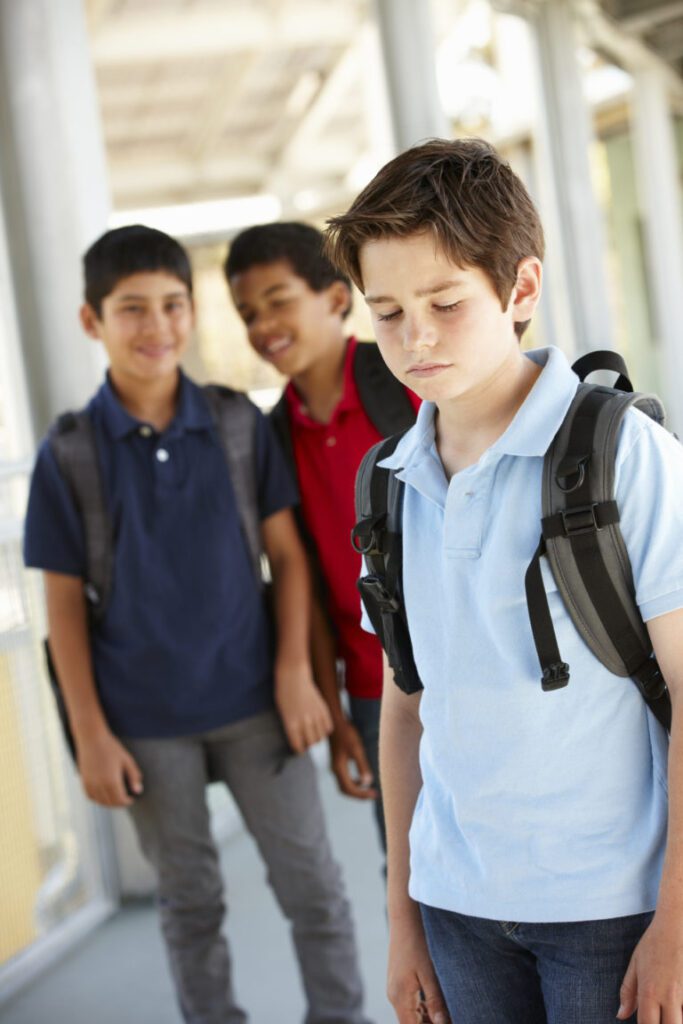How Does Bullying Develop?
The question can also be How does being bullied develop?
Let us be very clear, bullying does not just suddenly appear among children. But the same is also true for the victim of a bully. The problem with being the victim. This can go undetected, unnoticed in childhood, whereas the bully demonstrates their true essence in early childhood. But most parents don’t want to see or accept that their child is a bully. Bullying begins between 2 and 4 years of age.
The Beginning
How does bullying develop? - A young child, who has observed bullying in the family environment. Or who has learned a survival technique to avoid attention drawn upon themselves is deflection. They will enter early childhood settings. Such as creche, school, etc. And will bring with them a repertoire of learned behaviours from family, media, and other children. These experiences of childhood create behavioural patterns which are survival behaviours that the child has learned to survive.
In the family environment, a child may experience or observe from their parents or care givers, violence, physical punishment. Or the use of verbal or physical aggression to control others. These family experiences can lead the child to initiate aggressive behaviours. Because they have learned, through observation or experience, this is how you manage or control others. Therefore when the child enters early childhood settings. They use the skillset they have learned to get what they want and to control others. In contrast, when a child grows up in a loving caring family. Where they are thought positive social skills, they are less likely to initiate bullying in early childhood settings.
Media, such as TV, computer games, etc, also influence the child’s potential involvement in bullying. If the child observes on TV, the way to get what you want is by controlling others. Of course they are going to bully others for that same reward. In contrast, parental observations, educational tv and games. Can guide the child to initiate helpful behaviours and interact cooperatively with their siblings and peers.
The child’s interactive and / or observed experiences with siblings and other children. Will also influence how they will interact in early childhood settings. The child who experiences aggression and bullying-related behaviours by siblings or other children in the home or neighbourhood. May exercise these behaviours in their early childhood settings.
The bullied child will always appear to be weaker, more vulnerable and susceptible to being tormented and bullied. They may have experienced this at home or this may be a new experience. Either way, they will submit to the bully in order to survive.
The Development
How does bullying develop? - The child aged 2-4 may begin using aggressive or bullying behaviours to defend their possessions, territory, and friendships, why? Because they have observed or experienced this behaviour before. Therefore learned this is how one defends their possessions, territory or friends.
The older child 4–6 years old, may begin to use aggressive and bullying-related behaviors to threaten or intimidate other children. Again, the behaviour has not just begun, it began when the child was 2-4.
The success and therefore continued development of these aggressive and bullying behaviors depend on the response of the target. Example, if a child who is targeted, cries, or demonstrates a weakness, or hands over the toy to the bully. The aggressive child is likely to select and target the same child again, and the bullying behaviors will continue. The bully has learned that there is a reward for the aggressive behaviour. Sometimes, depending on the earlier childhood experience. The experience of seeing the victim hurt, weak, and upset, will exhilarate the aggressive child. Who may even take pleasure in seeing the pain of another child. Should this behaviour be allowed to continue, there is no doubt that a bully for life is in the making.
At this stage of bullying, the bully is no more than 6 years old. In the pursuing years into adolescence. The bully learns, not only can he/she get what he/she wants by bullying. But also cause hurt and pain to another person. But they also learn to see in the victim, the weakness that they themselves are hiding. Also their own fragility and brokenness, as well as their own vulnerability. Then they use their perfected skills to deflect from their own weakness and highlight the weakness of others.
By adolescence. With all its insecurities and uncertainties, and changes. The bully has developed a full skill set of deception, deflection, aggression. In some cases pure delight at the pain caused to others.
As the bullied child grows older, the same principle applies. They become targeted by the bully. They may submit because it is something they have learned to do as a young child. Or they may submit to protect their vulnerability.
When a child is bullied at any age between 2 and 12. They will always submit, referring to their already learned behaviour, or their survival instinct. The problem is, when a child is bullied and that behaviour is not corrected in childhood. That child will grow up susceptible to being bullied as an adult. Remember, the bully is always looking at deflecting their own weakness and vulnerability.
A good example. When a bully realises he is gay at the age of 12. But is not happy or comfortable with that fact. They will then search out another boy who displays gay tendencies. Or is effeminate and will arrange all the focus of everyone he can on that boy. In order to deflect the fact that the bully himself is gay.
The Mass Contagion
How does bullying develop? - In a classroom setting, when other children observe an aggressive child being bullied, and the “successful” results of this behaviour. They may join in––dominating the same victim repeatedly as a group. If these early behaviours of bullying are allowed to continue over a period of time. A power hierarchie may form, with groups of dominant children regularly bullying other weaker children. Who give in to their demands by crying and displaying weakness or vulnerability. The interesting thing is, when the group of bullies are not in a group, they are not bullies. These groups need the energy of each other to act out the behaviour.
Conclusion
Children become bullies between the age of 2 and 4. Children may be bullied between the age of 2 and 12. This is the time when they are under the care and supervision of the family unit. It is imperative that parents and care givers pay attention to the actions and behaviours of the child. Also of those around the child as well as the monitoring of all media.
When bullying is observed, it must be managed and the behaviour discouraged and eliminated.
How does bullying develop?
David Ellis













